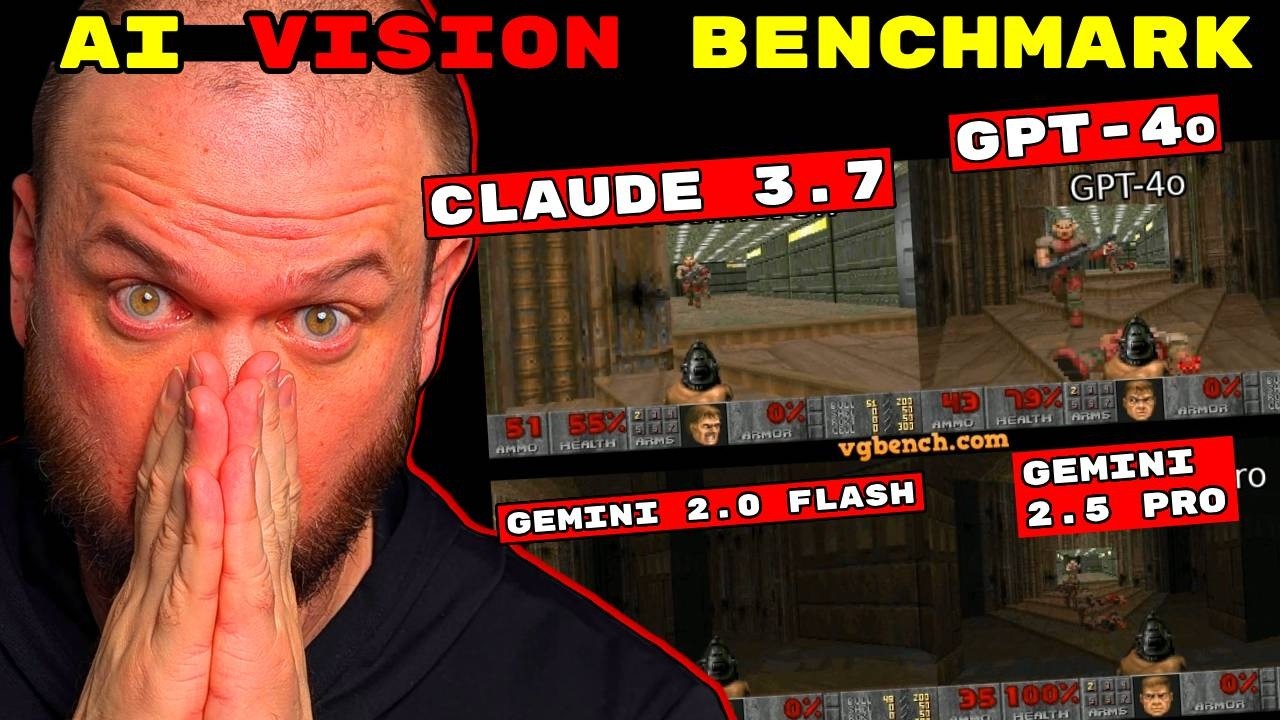The video tutorial introduces “Video Game Bench,” a platform that enables users to play classic '90s MS-DOS games using large language models (LLMs) and screenshots, comparing the performance of models like GPT-4.0 and Gemini 2.5 Pro. It provides a step-by-step guide for installation on Windows, emphasizing accessibility and encouraging viewer engagement with the benchmarks and gameplay experiences.
The video tutorial introduces “Video Game Bench,” a platform that allows users to leverage large language models (LLMs) to play classic '90s MS-DOS games using screenshots as input. The tutorial compares the performance of various models, including GPT-4.0, Gemini 2.5 Pro, Gemini 2.0 Flash, and Claude Sonnet, in playing games like Doom, Warcraft 2, and Pokemon Red. The host encourages viewers to engage with the benchmarks and make predictions about which model will perform best, noting that Gemini 2.0 has already been eliminated from the competition.
The tutorial emphasizes the accessibility of the Video Game Bench, particularly for Windows users, as many AI projects typically cater to Linux or macOS environments. The host plans to launch a subreddit called AI Guild to provide a complete walkthrough for installation and invites viewers to join. The installation process is described as straightforward, utilizing Anaconda, an open-source ecosystem for AI, which can be downloaded without registration.
To install Video Game Bench, the host guides viewers through the steps, starting with setting up Anaconda and using Windows PowerShell to create a working directory. The tutorial explains how to clone the GitHub repository containing the necessary code and install the required dependencies using pip. The host reassures viewers that the process is manageable, even for those unfamiliar with coding, as it primarily involves copying and pasting commands.
Once the installation is complete, the tutorial demonstrates how to run games using the command line. The host explains how to specify the game and model to use, detailing the arguments needed to execute the program. For example, to play Pokemon Red, users must ensure they have the appropriate ROM file in the designated folder. The tutorial also covers how to run different games and models, including the necessary commands for each.
The video showcases gameplay examples, highlighting how the AI models interact with the games. The host runs Doom 2 and Warcraft 2, demonstrating the models’ decision-making processes and how they handle in-game challenges. The tutorial concludes by encouraging viewers to share their experiences and any issues they encounter during installation, while also teasing the potential for future gameplay with various AI models.
